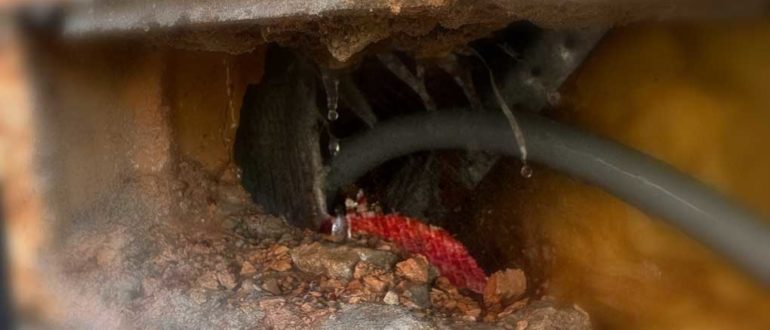Water leak detection is a crucial aspect of maintaining any building, whether it is a commercial facility or a private residence. Unaddressed water leaks can lead to significant damage, costly repairs, and health hazards due to mold growth. This article will highlight the most common areas within and near commercial and private structures where water leaks are likely to occur, as well as provide insights into the preventative measures and detection methods that can be employed to mitigate the potential risks.
Plumbing Systems
One of the most common sources of water leaks in both commercial and private facilities is the plumbing system. These systems can be susceptible to leaks in various locations, such as pipe joints, valves, and connections. Additionally, pipes can become corroded over time, leading to small pinhole leaks that can eventually become larger issues if left undetected. Water leak detection in these areas is essential to prevent structural damage and mold growth.
Roofing and Flashing
Roofs are a common area for water leaks, especially in regions prone to heavy rainfall or snow accumulation. Leaks often occur due to damaged or worn roofing materials, such as shingles, tiles, or membranes. Flashing, which is installed around roof penetrations like vents, chimneys, and skylights, can also develop leaks if not properly maintained. Regular inspections and water leak detection measures can help identify issues early, preventing costly repairs and interior damage.
Windows and Doors
Windows and doors are another common source of water leaks in buildings. Poorly sealed windows and doors can allow water to infiltrate the structure, leading to damage in the surrounding walls and floors. Regularly inspecting and maintaining the seals around windows and doors can help prevent water infiltration and the need for water leak detection in these areas.
HVAC Systems
Heating, ventilation, and air conditioning (HVAC) systems can also contribute to water leaks in both commercial and private facilities. Condensation can build up within the system and, if not properly drained, can lead to leaks and potential water damage. Regular maintenance and inspections of HVAC components, such as condensate drain lines, can help identify and address water leak issues before they escalate.
Basements and Foundations
Basements and foundations are particularly susceptible to water leaks due to their proximity to the ground. Water can infiltrate basements through cracks in the foundation, leading to dampness, mold growth, and structural damage. Effective water leak detection in these areas includes regular inspections for signs of water infiltration, such as damp spots on walls or floors, musty odors, or visible mold growth.
Irrigation Systems
Irrigation systems for landscaping and green spaces can also be a source of water leaks in commercial and private properties. Leaks in these systems can lead to water waste and damage to surrounding structures. Regular inspections and maintenance of irrigation systems can help identify potential issues and ensure proper water leak detection.
Appliances
Water-using appliances, such as dishwashers, washing machines, and water heaters, can develop leaks over time due to wear and tear or faulty connections. These leaks can cause significant damage if left undetected. Periodic inspection and maintenance of appliances can help identify potential issues and enable timely water leak detection and repair.
Bathrooms and Restrooms
Bathrooms and restrooms are high-risk areas for water leaks due to the constant use of water in sinks, toilets, and showers. Leaks can develop in fixtures, supply lines, and drain pipes, causing damage to flooring, walls, and ceilings. Implementing water leak detection measures, such as regular inspections and prompt repairs, can help avoid extensive damage and minimize the risks associated with water leaks in these spaces.
Sprinkler Systems
Fire sprinkler systems in commercial and residential buildings play a crucial role in fire safety, but they can also be a source of water leaks. Corroded pipes, damaged sprinkler heads, and malfunctioning valves can result in leaks that, if left undetected, may cause significant water damage. Routine inspections and maintenance of sprinkler systems can help ensure proper functioning and timely water leak detection.
Exterior Walls and Cladding
Exterior walls and cladding are designed to protect a building from the elements, but they can also be susceptible to water infiltration due to poor installation, damage, or wear over time. Water leaks in these areas can lead to structural damage and mold growth within wall cavities. Regular inspections and maintenance of exterior walls, as well as water leak detection measures, can help identify and address potential issues before they become more significant problems.
Swimming Pools and Water Features
Swimming pools, fountains, and other water features can develop leaks over time due to damaged or deteriorated components. These leaks can lead to water waste and damage to surrounding structures and landscaping. Regular inspections and maintenance of pools and water features, coupled with effective water leak detection methods, can help ensure their proper functioning and prevent potential issues.
Balconies and Terraces
Balconies and terraces are exposed to the elements, making them prone to water leaks due to damaged or worn waterproofing materials. Leaks in these areas can cause damage to the structural components of the balcony or terrace, as well as the interior of the building. Implementing water leak detection measures and regularly inspecting and maintaining waterproofing materials can help prevent issues and ensure the longevity of these outdoor spaces.
Water leak detection is an essential aspect of maintaining the integrity and safety of commercial and private facilities. By addressing common areas where water leaks are likely to occur, property owners and managers can minimize the risks associated with water damage, costly repairs, and health hazards. Implementing regular inspections, maintenance, and water leak detection measures can help ensure the long-term health of both the building and its occupants.

